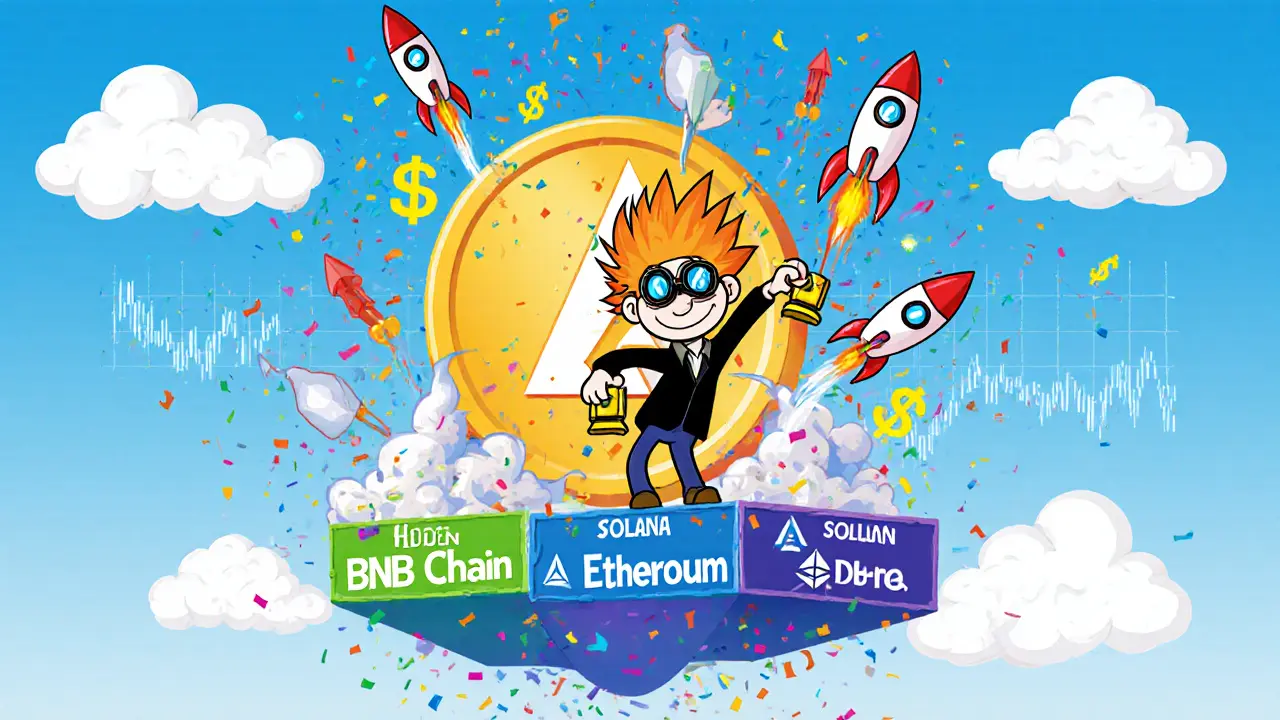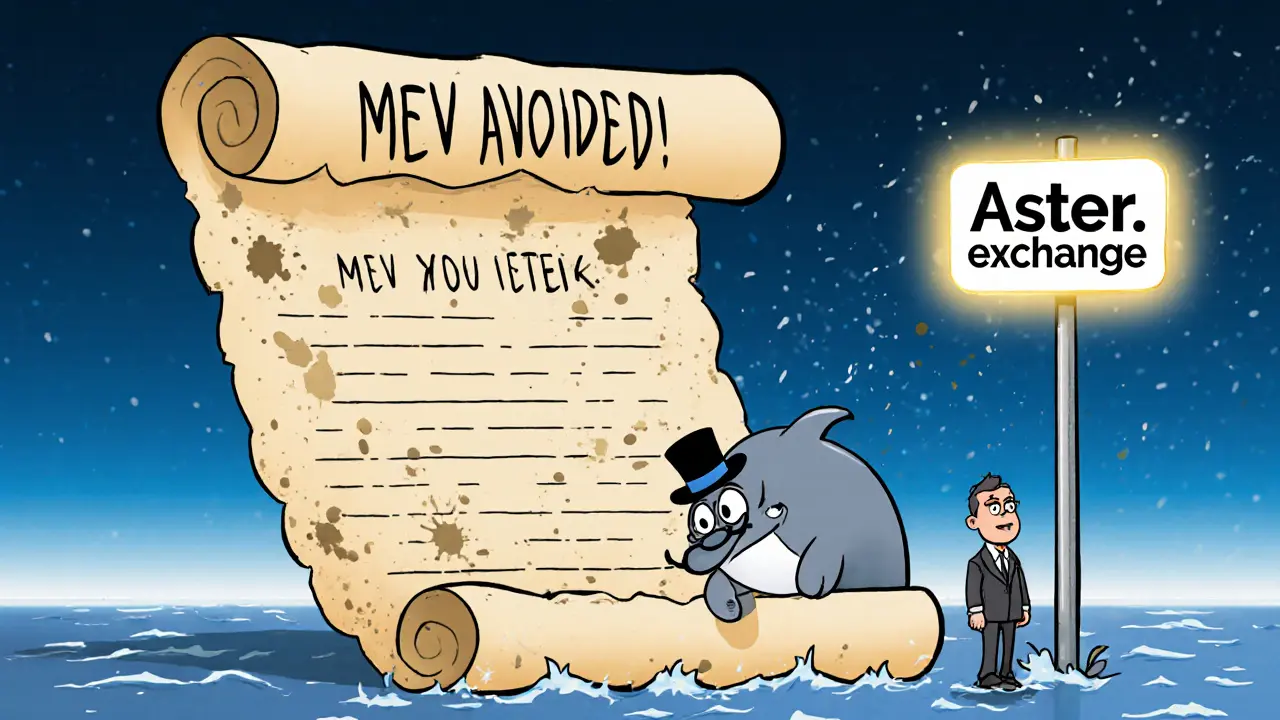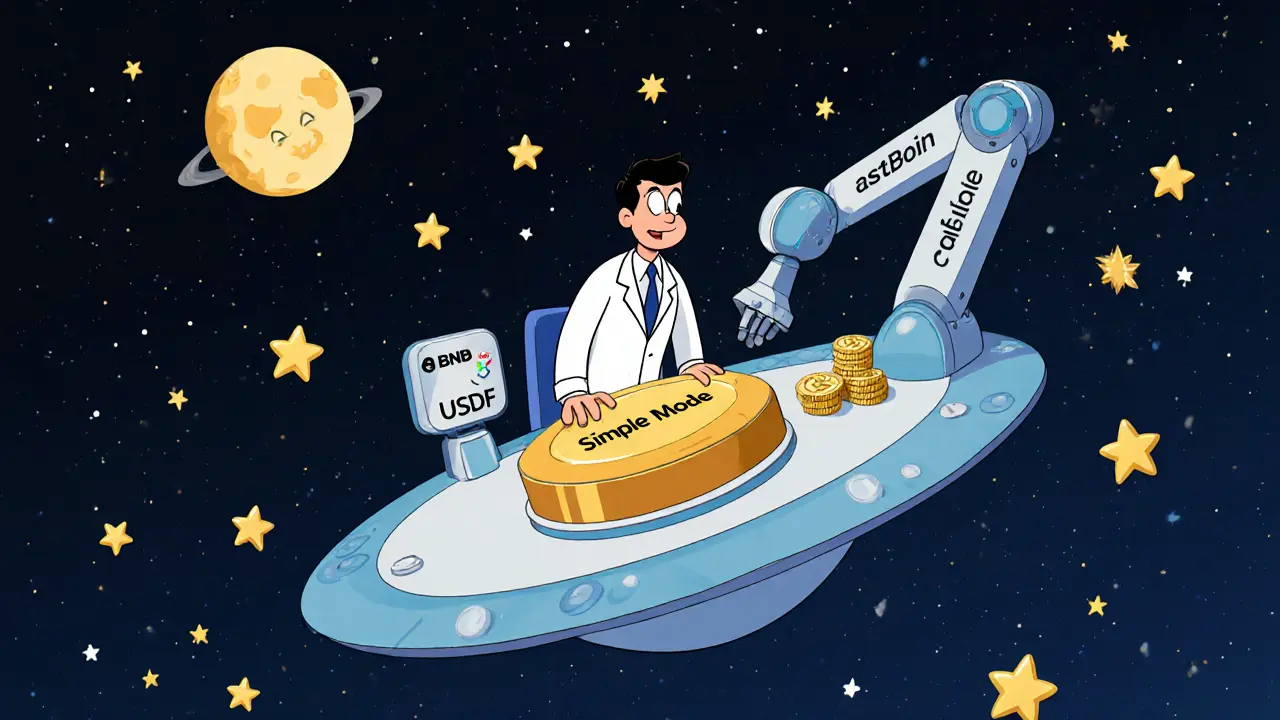
Aster Perpetual Trading Calculator
Calculate your position size and risk exposure for perpetual trading on Aster. Enter your trading parameters to see your potential liquidation price and maximum loss before liquidation.
Trade Analysis
Risk Warning
Trading with leverage increases potential profits but also magnifies losses. At 100x leverage, a 1% price movement against your position could result in a 100% loss of collateral. Always use stop-loss orders.
Aster's maintenance margin is 0.5% for positions over 50x leverage. If your equity falls below the maintenance margin level, your position will be liquidated.
Most crypto traders face a tough choice: use a centralized exchange like Binance for speed and liquidity, or jump into a decentralized exchange (DEX) for control but sacrifice features. Aster claims to solve that problem. Launched in early 2025, it’s not just another DEX-it’s a multi-chain perpetual trading platform built for serious traders who want DeFi’s self-custody without giving up professional tools.
What Makes Aster Different?
Aster doesn’t try to be a single-chain DEX. Instead, it connects directly to BNB Chain, Ethereum, Solana, and Arbitrum. This horizontal integration means it pulls liquidity from all of them, not just one. That’s a big deal. Most DEXs struggle with slippage on large trades because they’re stuck on one chain with limited depth. Aster avoids that by aggregating order flow across four major networks. You get tighter spreads and faster fills without needing to move assets between wallets. It also offers both spot and perpetual trading. Perpetuals are contracts that never expire-ideal for leveraged positions. Aster lets you trade them with up to 100x leverage in its ‘1001x’ mode (formerly Pro Mode). For beginners, there’s a ‘Simple Mode’ that hides complexity and lets you trade with one click. You don’t need to understand funding rates or liquidation thresholds to get started. One standout feature is hidden orders. Most DEXs show every order on the order book, making it easy for whales to front-run you. Aster lets you place orders that only appear when they’re about to be filled. This is a feature usually reserved for institutional traders on centralized platforms like Coinbase Pro or Binance Futures. Now it’s available in a non-custodial environment.The ASTER Token: More Than Just a Utility Coin
The ASTER token is the engine behind the platform. With a max supply of 8 billion, it’s not scarce-but its distribution is strategic. Over half (53.5%) went to airdrops, targeting active traders and early community members. If you earned Rh or Au points during Aster Spectra Stages 0 and 1, or traded on Aster Pro with loyalty rewards, you were eligible. The initial airdrop unlocked 704 million tokens (8.8% of supply) in September 2025, with the rest vesting over nearly 7 years. The token isn’t just for governance. It’s used to pay trading fees, earn yield, and participate in ecosystem incentives. You can stake ASTER to earn rewards from protocol fees, and the platform accepts yield-bearing assets like asBNB and USDF as collateral. That means your collateral isn’t sitting idle-it’s earning interest while you trade. Most DeFi platforms force you to choose between trading and earning. Aster lets you do both.Price Performance: A Rollercoaster Since Launch
Aster’s token price tells a story of hype, volatility, and market reality. When it launched in early September 2025, ASTER was trading under $0.10. Within days, it hit $2.42-a 20x surge. Then it jumped another 200% to $1.85 in just seven days. That kind of movement isn’t unusual in crypto, but the drop that followed was sharp. By mid-October, it had fallen over 30%, settling around $1.63-$1.69. Technical indicators suggest a possible bottom forming. The price consolidated around $1.50 before its last rally, and now it’s testing that same level again. RSI and MACD are showing signs of reversal, but the broader crypto market is still choppy. Traders are pulling back from high-risk altcoins as Bitcoin hovers near $70,000 and macro uncertainty lingers. Analysts are split. Some predict ASTER could reach $2.07 by year-end 2025. Others see $9.82 by 2030 if adoption grows. But these are speculative. The token’s value is tied to platform usage. If trading volume doesn’t grow, the price won’t sustain.
Aster vs. Hyperliquid: Different Paths to the Same Goal
Hyperliquid is Aster’s closest competitor. Both offer perpetual trading with low fees and institutional tools. But their architectures are opposites. Hyperliquid runs its own blockchain. That gives it full control over speed, security, and liquidity. It supports over 100 trading pairs with deep order books. But you’re locked into one ecosystem. If you want to trade SOL-based assets, you need to bridge your SOL to Hyperliquid’s chain. Aster takes the opposite route. It doesn’t build its own chain. Instead, it connects to existing ones. You can trade ETH, BNB, SOL, and ARB assets without leaving your wallet. That’s more flexible, but it’s also more complex. Each chain has different fees, confirmation times, and risks. If Ethereum is congested, your order might lag. If Solana goes down, your liquidity on that chain disappears. Aster’s advantage is accessibility. You don’t need to learn new chains or manage multiple bridges. Hyperliquid wins on performance. Aster wins on convenience.Who Is Aster For?
If you’re a casual trader who just wants to buy Bitcoin and hold, Aster isn’t for you. The interface, even in Simple Mode, assumes you understand leverage and funding rates. But if you’re someone who:- Trades perpetuals regularly
- Wants to keep control of your keys
- Uses multiple chains (BNB, Ethereum, Solana)
- Needs hidden orders or grid trading
- Wants to earn yield on your collateral

Is Aster Safe?
Aster is non-custodial. That means you never give up control of your assets. Your funds stay in your wallet. The platform only interacts with your wallet when you place or close a trade. It uses a Layer 1 called Aster Chain for order matching and settlement. This chain is optimized for speed and low fees, with no gas spikes. Smart contracts have been audited by third parties, though full public reports aren’t yet available. The team behind Aster is anonymous, which is common in DeFi but raises questions about accountability. There’s no insurance fund like on centralized exchanges. If a smart contract fails or a chain goes down, you could lose funds. That’s the trade-off for self-custody.How to Get Started
1. Connect your wallet (MetaMask, Phantom, or Keplr are supported).2. Go to aster.exchange (verify the URL carefully-scam sites are common).
3. Choose between Simple Mode (one-click trading) or 1001x Mode (advanced settings).
4. Deposit collateral: USDT, USDC, asBNB, or ASTER.
5. Select your trading pair and set leverage.
6. Place your order. Use hidden orders if you’re trading larger sizes.
You can claim ASTER tokens if you qualified for the airdrop. The claim window closed on October 17, 2025, but future airdrops are likely as the ecosystem expands.
Final Thoughts
Aster isn’t a magic bullet. It’s a bold experiment in bringing institutional trading tools to DeFi. The platform works. The features are real. The token’s price history shows how quickly hype can inflate-and deflate-a project. If you’re comfortable with DeFi’s risks and want a DEX that doesn’t feel like a step backward from Binance, Aster is worth trying. Don’t invest based on price predictions. Trade based on whether the platform solves your actual problems. The future of crypto trading won’t be centralized or decentralized-it’ll be hybrid. Aster is building that hybrid right now.Is Aster a centralized or decentralized exchange?
Aster is a decentralized exchange (DEX). It’s non-custodial, meaning you keep control of your funds in your own wallet at all times. The platform doesn’t hold your assets, and trades are settled directly on-chain across multiple blockchains like Ethereum, BNB Chain, Solana, and Arbitrum.
Can I trade BTC and ETH on Aster?
Yes. Aster supports spot and perpetual trading for major assets including BTC, ETH, SOL, BNB, and ARB. You can trade them against USDT, USDC, or ASTER. The platform aggregates liquidity from multiple chains, so you’re not limited to one network.
What’s the maximum leverage on Aster?
In 1001x Mode, Aster allows up to 100x leverage on perpetual contracts. This is designed for experienced traders. Simple Mode limits leverage to 10x or less to reduce risk for beginners. Always use stop-losses-high leverage can lead to quick liquidations.
Is ASTER token a good investment?
ASTER’s price has been extremely volatile since its September 2025 launch, surging over 20x and then dropping 30% within weeks. Its value is tied to platform usage, not speculation. If trading volume grows, demand for ASTER as a fee token and collateral asset will rise. But if adoption stalls, the price could fall further. Don’t invest based on price predictions-only if you believe in the platform’s long-term utility.
Does Aster have a mobile app?
As of November 2025, Aster does not have a dedicated mobile app. The platform is accessible through web browsers on mobile devices. The interface is responsive and works well on smartphones, but you’ll need to connect your wallet via a mobile dApp browser like MetaMask or Phantom.
Can I use ASTER as collateral for trading?
Yes. ASTER is accepted as collateral on Aster’s perpetual markets. You can also use yield-bearing assets like asBNB and USDF, which earn interest while you trade. This improves capital efficiency compared to traditional DEXs that only accept stablecoins.
Are hidden orders safe on Aster?
Hidden orders on Aster are designed to prevent front-running by showing your order only when it’s about to execute. This reduces the risk of large traders seeing your order and trading ahead of you. Since Aster operates on-chain, the mechanism is trustless and transparent. However, no system is 100% immune to MEV (Miner Extractable Value), though Aster uses MEV-aware routing to minimize it.
What happens if one of Aster’s supported chains goes down?
If Ethereum, Solana, or another chain goes offline, trading on that chain’s assets will pause until it’s restored. Your funds remain safe in your wallet. Aster’s multi-chain design means you can still trade on other active chains. For example, if Solana is down, you can still trade BNB or ETH pairs. This redundancy is a feature, not a flaw.

Mike Calwell
November 17, 2025 AT 14:55Astor Digital
November 18, 2025 AT 13:13Shanell Nelly
November 18, 2025 AT 23:16Aayansh Singh
November 19, 2025 AT 03:10